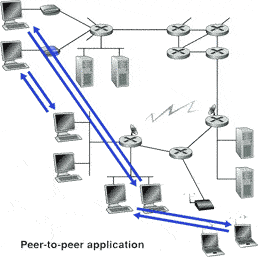|
Client-Server Architecture is an always on host called the server, which services requests from many other hosts, called clients. Client hosts can be sometimes on or always on. With the client-server architecture, clients do not directly communicate with each other. Client-server architecture's server has a fixed, well known address called an IP address. These characteristics allow a client the ability to always contact the server by sending a packet to the server's address. In a client-server application, a single server host
is incapable of keeping up with all the requests from its clients. Therefore, clusters of hosts, referred to as server farm are sometimes used
to create a powerful virtual server in client-server
architecture.
|






